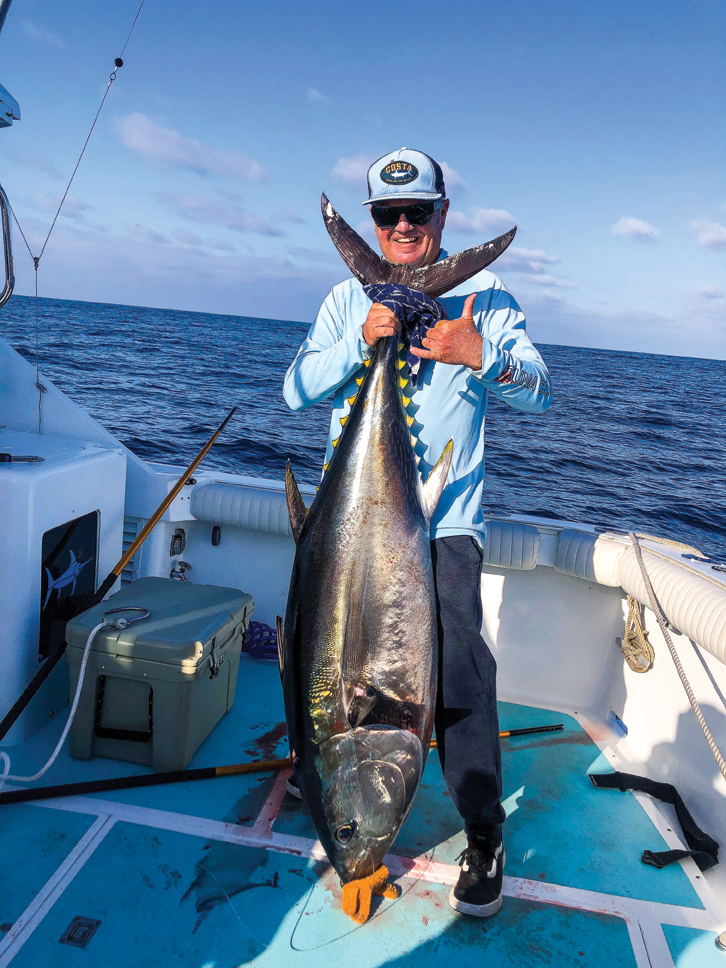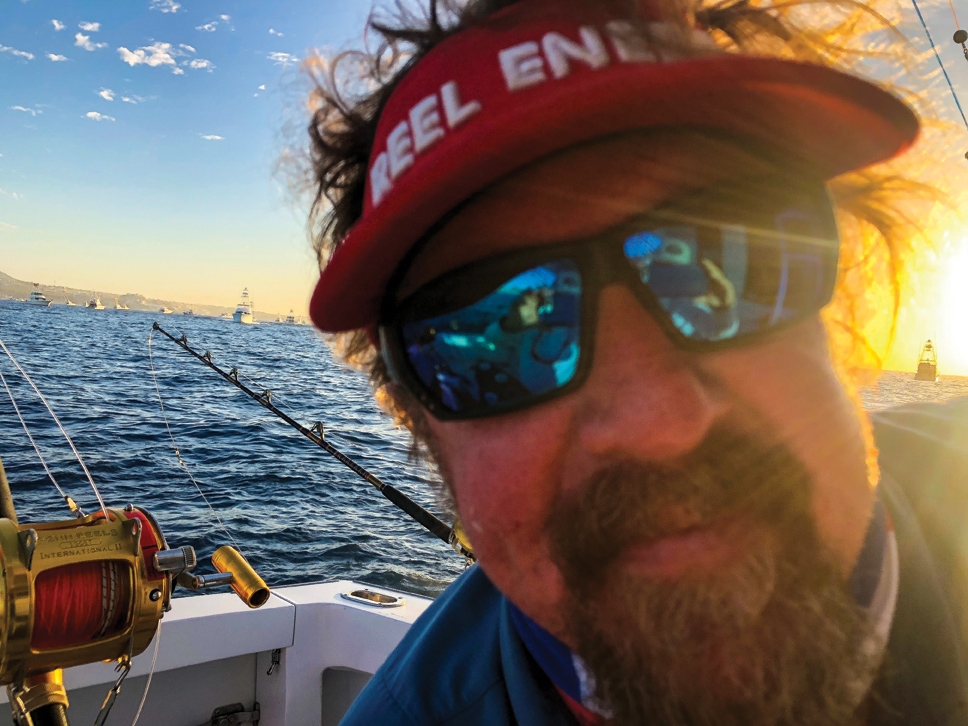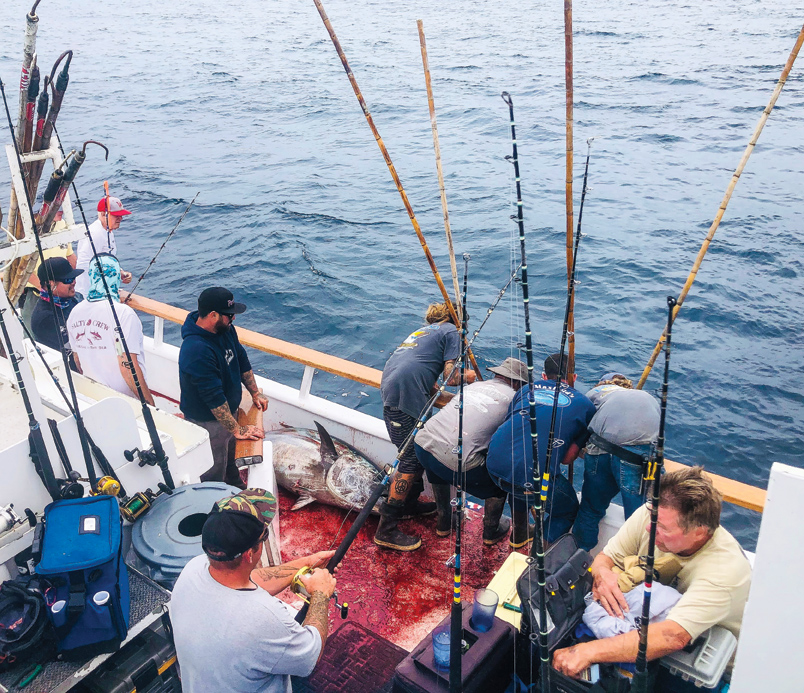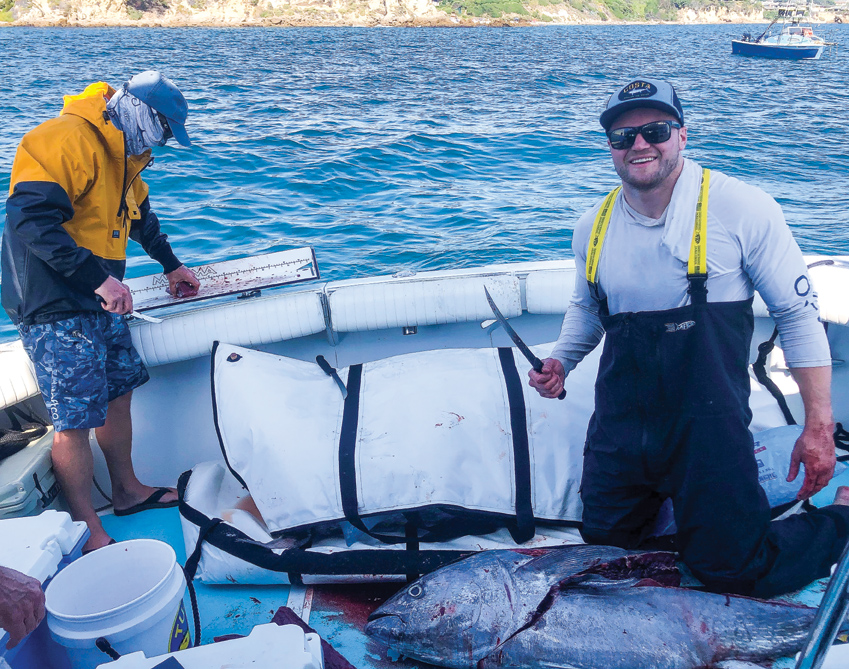 Bluefin Gear
Bluefin Gear
Fishing bluefin is like playing a round of golf. Golfers need specific golf clubs for each section of the greens, anglers need a set of outfits for each type of bluefin bite. A good ‘starter kit’ for local bluefin would be a 30, 40, 60, and 80-pound class outfits. While a two-speed reel is not necessary on your thirty-pound outfit, the forty thru eighty-pound outfits need to be lever drag two speed reels. If I wanted to add to this quiver, I would include a jig stick for throwing poppers and surface iron and another rail rod outfit with #100 lb. line.
Most west coast sport boats that are targeting bluefin will have their own ‘kite outfits’ onboard for anglers to use on the kite rotation. The crews have these outfits rigged properly for the kite and it is one less heavy outfit to bring on the trip. For the private boat set, the options are endless. If your style of fishing is on the rail, I recommend the Seeker OSP 2 x 4 or 3X and a thirty or fifty size two speed reel loaded with 100/130-pound braid. On my boat we like the challenge of a standup battle and use a Seeker Black Steel 6465XH rod paired with a PENN International 50 or 70VISX reel and 50/80 lb. line. The six- and half-foot rod when combined with an AFTCO bucket harness is deadly on big tuna.
 On this ‘bluefin starter kit’ the outfit that seems to be most versatile and has other fishing applications is the forty-pound outfit. My ‘go-to’ forty-pound outfit is a PENN Fathom 30 two speed lever drag reel filled with #65-pound braid and a hundred-foot top-shot of forty-pound Big Game monofilament. Paired with Seeker 6470-7’ rod, it is a great heavy bait rod and can send a sardine on a flight off the corner or bow. After tuna season, this outfit doubles as a ‘yo yo’ outfit for yellowtail in the spring. I also bring it down to Baja in the fall for school tuna, dorado, and wahoo. A perfect all-around outfit for many applications.
On this ‘bluefin starter kit’ the outfit that seems to be most versatile and has other fishing applications is the forty-pound outfit. My ‘go-to’ forty-pound outfit is a PENN Fathom 30 two speed lever drag reel filled with #65-pound braid and a hundred-foot top-shot of forty-pound Big Game monofilament. Paired with Seeker 6470-7’ rod, it is a great heavy bait rod and can send a sardine on a flight off the corner or bow. After tuna season, this outfit doubles as a ‘yo yo’ outfit for yellowtail in the spring. I also bring it down to Baja in the fall for school tuna, dorado, and wahoo. A perfect all-around outfit for many applications.
Work the Zone
On many bluefin trips, we set up a drift and deploy a dead flying fish from the kite. With the kite rig on the downwind side of the boat, we deploy ‘sinker rigs’ with live baits and staggered the depths. Prior to the trip, to fish the proper depth, we will mark our braid at 20, 30, and 40 fathom intervals. We start by bringing our outfits out to any of the local high school football fields. For the twenty-fathom mark (120’) – we use the monofilament top shot as a marker – where the monofilament attaches to the braid (100’) or if using a short top-shot we take a black Magic Marker and make a three inch black mark at 120’. While standing at the goal line, have someone walk the line out to the forty-yard line. Next, go another twenty yards and make a black mark for your thirty-fathom mark. And then another twenty yards for your forty-fathom mark.
 When deploying a sinker rig and you hear the captain say “Marking fish at thirty fathoms” – slowly drop your bait or jig down to the second black mark and you are fishing the zone. It amazes me how many times we mark fish at a specific depth and the outfit at that depth gets bit instantly. It is not science, just properly fishing the depth zone where the tuna are swimming through under the boat. These marks will be extremely helpful at night when deep jigging a Flat Fall or iron for bluefin. If the captain is marking tuna at a specific depth, drop to your black mark and work the jig up and down repeatedly in that zone. It works!
When deploying a sinker rig and you hear the captain say “Marking fish at thirty fathoms” – slowly drop your bait or jig down to the second black mark and you are fishing the zone. It amazes me how many times we mark fish at a specific depth and the outfit at that depth gets bit instantly. It is not science, just properly fishing the depth zone where the tuna are swimming through under the boat. These marks will be extremely helpful at night when deep jigging a Flat Fall or iron for bluefin. If the captain is marking tuna at a specific depth, drop to your black mark and work the jig up and down repeatedly in that zone. It works!
Innovation
 As the local bluefin fishery evolves, do not hesitate to try something new to get a bite. A new presentation can mean the difference between coming home with a trophy or nothing at all. One of the techniques I am playing with this season is trolling a blue/white Illander with a ballyhoo east coast style on the long rigger or stinger position while prospecting for a bluefin zone. It is a proven bluefin trolling bait on the east coast – should work here as well right?
As the local bluefin fishery evolves, do not hesitate to try something new to get a bite. A new presentation can mean the difference between coming home with a trophy or nothing at all. One of the techniques I am playing with this season is trolling a blue/white Illander with a ballyhoo east coast style on the long rigger or stinger position while prospecting for a bluefin zone. It is a proven bluefin trolling bait on the east coast – should work here as well right?
Another technique that I am experimenting with is the down rigger baits. During the middle of the day and between the slack tides, we often mark fish at thirty and forty fathoms and wait for them to come up on the slack tide. Why not deploy a live mackerel or sardine down at 150’-180’ and slow troll it thru the zone? I know a lot of captains that have down riggers on their boat, but they rarely are used on the west coast tuna fishery – we need to change that this season.
 I have only heard of limited success stories out here on the west coast but deploying a Green Stick rig should be a deadly tool on our bigger bluefin fishery. The Green Stick set up cost prevents most of the private boat fleet from experimenting with them here locally, but it sure seems like the smaller ‘Kona’ Green Stick system would be deadly on our bluefin. My last trip to Kona I watched 25’ -30’ skiffs using the ‘Kona’ stick and absolutely smashing big yellowfin on them while the live bait and troll fleet had a slow day. Innovation – one of the keys to being successful on local bluefin.
I have only heard of limited success stories out here on the west coast but deploying a Green Stick rig should be a deadly tool on our bigger bluefin fishery. The Green Stick set up cost prevents most of the private boat fleet from experimenting with them here locally, but it sure seems like the smaller ‘Kona’ Green Stick system would be deadly on our bluefin. My last trip to Kona I watched 25’ -30’ skiffs using the ‘Kona’ stick and absolutely smashing big yellowfin on them while the live bait and troll fleet had a slow day. Innovation – one of the keys to being successful on local bluefin.
Finally, if you are on a private boat, bring a pair of gyro binoculars and help the captain locate fish. The more ‘eyes in the sky’ the better for hunting bluefin. If you are not the type that can sit and glass all day in binoculars – the next best thing is a good pair of polarized sunglasses to locate terns, color spots, and breaking fish. When I am not in the glasses, I wear Costa Tuna Alley frames with 580G Sunlight Silver Mirror for the low light or overcast days then switch to 580G Green Mirror lens for when the sun comes out or heavy glare. All it takes it one tiny sign to turn into a ripper bite that will make the trip.
Bluefin Care
All tuna, especially bluefin, should be bled and iced or cooled down after capture to ensure some tasty eating tuna dinners. Many of the sport boats have RSW systems to preserve your catch until your back at the dock. After the bluefin is boated, a deckhand will cut the gills to help bleed the fish – or on some boats remove the stomach and intestines before the tuna is dropped down in the RSW. The latter method delivers a beautiful product and is ready for the fish processors to prepare your catch.
If you own your own boat and want to get in on this bluefin fishery, invest in a proper insulated kill bag and understand ice management on your next tuna trip. For our boat, we purchased an XL Reliable kill bag and load the bottom with eight blocks of ice. On top of the blocks, we will add another 100-150 lbs. of crushed ice to keep our catch chilled for an overnight trip. The block ice helps keep the crushed ice cool and we seem to get way more shelf life when combining the block ice with crushed. A plastic shovel helps keep the ice evenly spread over the fish.
I hope this article got you thinking about new bluefin tactics to try out this season. Our bluefin tuna fishery is incredibly challenging when compared to our other fisheries. However, by keeping an open mind to innovation and polishing up proven techniques, any angler can crack the code on a local bluefin!
